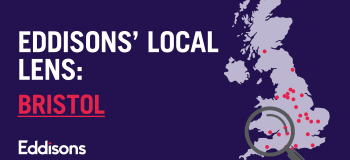10/01/2025
Property AgencyOn the face of it, selling a leasehold property is very similar to a freehold property. The sales process takes time and involves plenty of paperwork and legal checks. There are a few extra forms to fill in and additional information you will need to provide. However, assuming you can access the relevant information and there’s enough time left on the lease, you should be able to complete the process smoothly.
What is a leasehold property?
If you own a leasehold property, you have exclusive use of the home or premises for a fixed period according to the length of the lease, typically ranging from 99 to 999 years. Although you own the property, you don’t own the land it sits on. You rent that from the freeholder via a ground rent. You also pay the freeholder to maintain the building the property is in (if it’s one part of a larger building) and the communal areas via an annual service charge or maintenance fee.
There are currently around 5 million leasehold dwellings in England. Most of those, approximately 70%, are flats. Some houses are also leasehold, although the sale of new-build leasehold houses will soon be banned. Leasehold ownership is also increasingly common in the UK commercial market.
Is it hard to sell a leasehold property?
Hundreds of thousands of leasehold properties are sold in the UK every year. The vast majority of those proceed without any issues. However, the process can take longer than an equivalent freehold property as there are more moving parts and more checks for the buyer’s solicitor to complete. For example, the buyer and their solicitors will want to know:
When does the lease expire?
Once the lease expires, ownership of the property returns to the freeholder. It is possible to extend the lease, but that can be expensive if the term is below 80 years. Therefore, it’s usually easier to sell a property with a longer lease, typically over 100 years.
Are there unfair service charges, ground rents or fees?
There have been issues with freeholders and management companies inflating charges on leasehold properties, which can put off potential buyers. You should be honest and upfront about charges from the off to prevent issues further down the line when everyone’s costs have increased.
Are there any restrictions?
There are often rules within the lease, known as covenants, that leaseholders must comply with. For example, there may be restrictions on having pets or making alterations that may deter buyers.
What condition is the property in?
When selling any property, getting it in the best possible condition can increase interest from buyers. With a leasehold property, a managing agent is usually responsible for maintaining communal areas of the building, such as gardens, hallways and stairwells. That limits the impact you can have as a seller, and if these areas are not maintained well, the property may be less attractive to buyers.
The process of selling a leasehold property
When you’re ready to put a residential or commercial leasehold property on the market, these are the steps to take:
1. Find an estate agent
Look for an agent with good local knowledge and experience valuing and selling your property type, whether it’s a city-centre flat or a sector-specific commercial premises. Obtain at least three valuations and discuss fees before choosing an agent.
2. Inform the freeholder
Although you don’t have to, it’s also worth mentioning your plans to your freeholder early on so they can start preparing the relevant documents, such as the landlord certificate (if it’s required) and leasehold management pack.
3. Appoint a solicitor
When choosing a solicitor, appoint someone with experience in leasehold property sales. They’ll know what to expect from the process and be able to advise you on the documentation you’ll need to provide.
4. Gather key documents
Before you receive an offer, it’s worth taking some time to get the various documents you’ll need together. There are specific documents you’ll need when selling a leasehold property. We cover those in more detail below.
5. Get an offer
Your estate agent will conduct viewings and all being well, you’ll receive an acceptable offer. You should answer any questions the prospective buyer has at this stage accurately and in detail to prevent issues at a later stage in the process.
6. Provide documents and respond to any queries
A key difference when selling a leasehold property is the requirement to complete a leasehold management pack. It includes details about costs, maintenance, property management, lease terms, service charge accounts, fire risk assessments, planned works and other information relevant to the property. The landlord or management agent typically charges a fee to compile the management pack. The buyer’s solicitors may also have questions you must answer accurately and in full.
7. Exchange contracts and completion
Once everything has been finalised, you can sign and exchange contracts with the buyer. You must vacate the property on the completion date if you haven’t already so the new owner can move in.
How long does it take to sell a leasehold property?
Once you have accepted an offer, you can expect it to take between two and four months to sell a leasehold property. You can speed the process up by requesting the leasehold management pack from the managing agent as quickly as possible as it usually takes two to five weeks to produce.
You should also instruct a solicitor as soon as the property goes on the market and chase your solicitor and estate agent to prevent bottlenecks and keep the process moving in the right direction.
What documents do you need when selling a leasehold property?
Getting all the relevant documents together is usually the most time-consuming part of selling a leasehold property, and you will benefit by starting the process early.
Firstly, you’ll need to provide a copy of your original lease. If you’re unable to find the lease, you’ll usually be able to get a copy from the Land Registry or the solicitor you instructed when you bought the property. You’ll also need the leasehold management pack, which we’ve already discussed.
As well as those documents, you’ll need to provide the same paperwork as a freehold property. That includes:
- Property title deeds
- Property information form (TA6)
- Fittings and contents form (TA10)
- Energy Performance Certificate (EPC)
- Building regulations certificates
- Details of warranties and guarantees
Preparations before selling a leasehold property
It’s worth taking time to make your property attractive to prospective buyers and maximise its value as much as you can. Here are a few steps you can take:
Add value to your property
If you’re selling a leasehold house or flat, make sure the property is looking its best. You can do that by painting it, replacing cracked tiles and damaged flooring, decluttering and sprucing up communal areas that are looking tired. If you’re selling a commercial property, increasing the rent of any existing tenants and asking a local assessor to re-evaluate your business rates can also enhance its value.
Read more: How to add value to your commercial property
Manage your service charge
If there are any outstanding repairs or maintenance issues, chase up your managing agent to seek a resolution. You should also make a note of any issues you have had with the service charge in the past and search for supporting documentation you may have been sent.
Choose the right property agent
Getting the right team on board can impact how quickly you sell and the price you achieve. Agents that specialise in your sector will often have a database of interested buyers and be able to market properties effectively and deal with any issues you encounter during your sale.
How we can help
At Eddisons, our Commercial Property Agents and Valuers have vast experience selling leasehold commercial properties in sectors including corporate, industrial, retail, leisure and more. We sell hundreds of leasehold properties every year and have an established database of buyers who are actively seeking new opportunities in your sector. Get in touch to discuss your leasehold property with our team.






